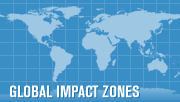Markey Queries BP on Discrepancies in Relief Well Dates, Worst-Case Scenario Figures
Relief Well Application Says July 15th Completion Date, Changes Worst-Case Scenario for Potential Spill
July 8, 2010 – Following today’s assertion by BP that they could complete the relief well within the next few weeks, Rep. Edward J. Markey (D-Mass.) asked for clarification from the company on that potential date, due to discrepancies in statements to the public and to the government on that plan. While BP had previously been insisting that the relief well would not be done until August, BP’s relief well application submitted to the Minerals and Management Service lists a finishing date of July 15th for the well.
July 27th is the date BP will submit financial earning statements for the second quarter of this year and speak with investors about the company’s health. Even BP’s Bob Dudley called this July 27th date “unlikely” due to variables like the weather.
“While everyone wants the quickest possible end to this disaster, we don’t need rose-colored scenarios, but realistic estimates on when this spill will finally be over,” said Rep. Markey.
In a letter sent today to BP America CEO Lamar McKay, Rep. Markey also asks BP for details on the worst-case spill scenarios included in the relief well application. The original exploration plan for the Macondo well indicated that a worst-case spill scenario would be 162,000 barrels per day (bpd). The initial April 24th, 2010 exploration plan for the relief wells also included the 162,000 bpd worst-case scenario. It was then amended on April 27th, 2010, increasing to 240,000 bpd, just 10,000 bpd below BP’s regional response plan scenario of 250,000 bpd.
“BP’s ever-changing numbers on the potential worst-case scenarios bring into question the validity of these numbers, and which one should be seen as the best estimate of the worst-case spill scenario,” writes Rep. Markey in the letter.
The relief well application also includes language from the original response plan for the Macondo well claiming that, with a spill, “due to the distance to shore (48 miles) and the response capabilities that would be implemented, no significant adverse impacts are expected.”
“This is clearly not the experience in the aftermath of the original Macondo well blowout. Why have you used the same language for the impact of a spill from the relief wells despite the experience of the spill from the original well?” asks Rep. Markey in the letter.
The full letter can be found HERE.
The documents referenced in Rep. Markey’s letter:
BP’s Initial Exploration Plan, March 2009 (worst-case scenario pg 28; “no impacts” statement pg 44)
BP’s Supplemental Exploration Plan and revisions (for relief wells), April 2010 (drill finish date, pg 18; original worst-case scenario 162,000 bpd, pg 38; revised worst-case scenario 240,000 bpd, pg 10)
BP’s Gulf of Mexico Regional Oil Spill Response Plan, June 2009 (Worst-case scenario, pg 508)
The Select Committee was active during the 110th and 111th Congresses. This is an archived version of the website, to ensure that the public has ongoing access to the Select Committee record. This website, including external links, will not be updated after Jan. 3rd, 2010.
![]() del.icio.us
del.icio.us
![]() Digg this
Digg this
![]() Reddit
Reddit
![]() Stumbleupon
Stumbleupon



